An Eventful Week in Carthage
Chrissie Harrison
Sometime in the spring of 1990 whilst shopping in Habitat, Tottenham Court Road, I bumped into Paul McCulloch. We sat on a sofa and had a chat about the archaeological excavations in Carthage which he would be supervising in the coming summer. This conversation led to a welcome invitation to visit the site.
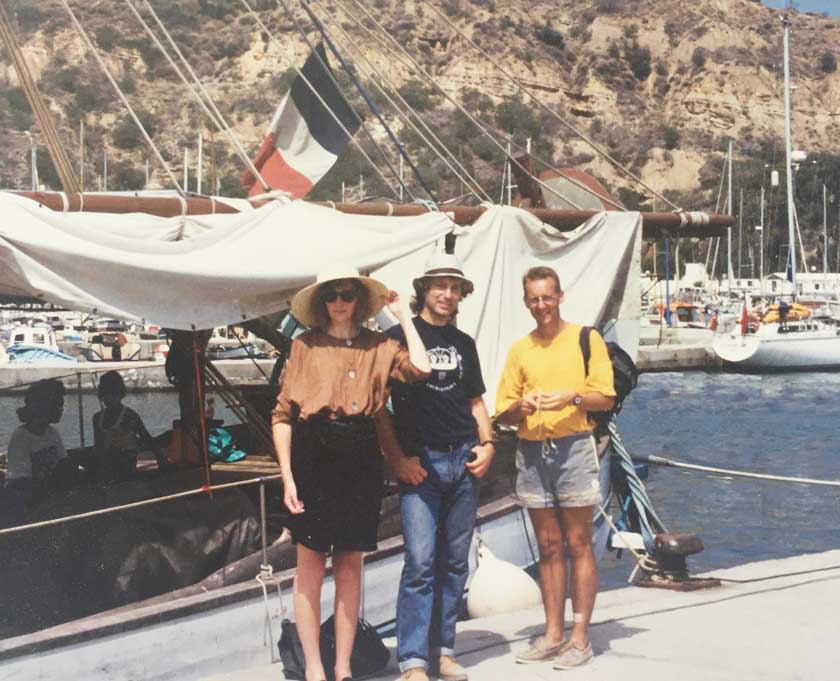 Sidi Bou Said marina... Myself, Gustav Milne and Paul McCulloch ...Le Pount
Sidi Bou Said marina... Myself, Gustav Milne and Paul McCulloch ...Le Pount
We arrived late at night on the 7th September at Tunis Airport, greeted by the intense heat, jasmine scented air and the North African vibes of mysteriousness and money changing. Paul was there to meet us and help with the formalities before we were bundled into a taxi bound for the dig house, situated in the Tunisian suburb of Carthage.
Too impatient to wait for daybreak, we went out into the night to see the Phoenician circular harbour at the Cothon, where some 200 warships could have been accommodated. On the central island were the shipsheds where the warships could have been drawn up on slipways: harbour archaeology on an impressive scale to dwarf the Port of Roman London.
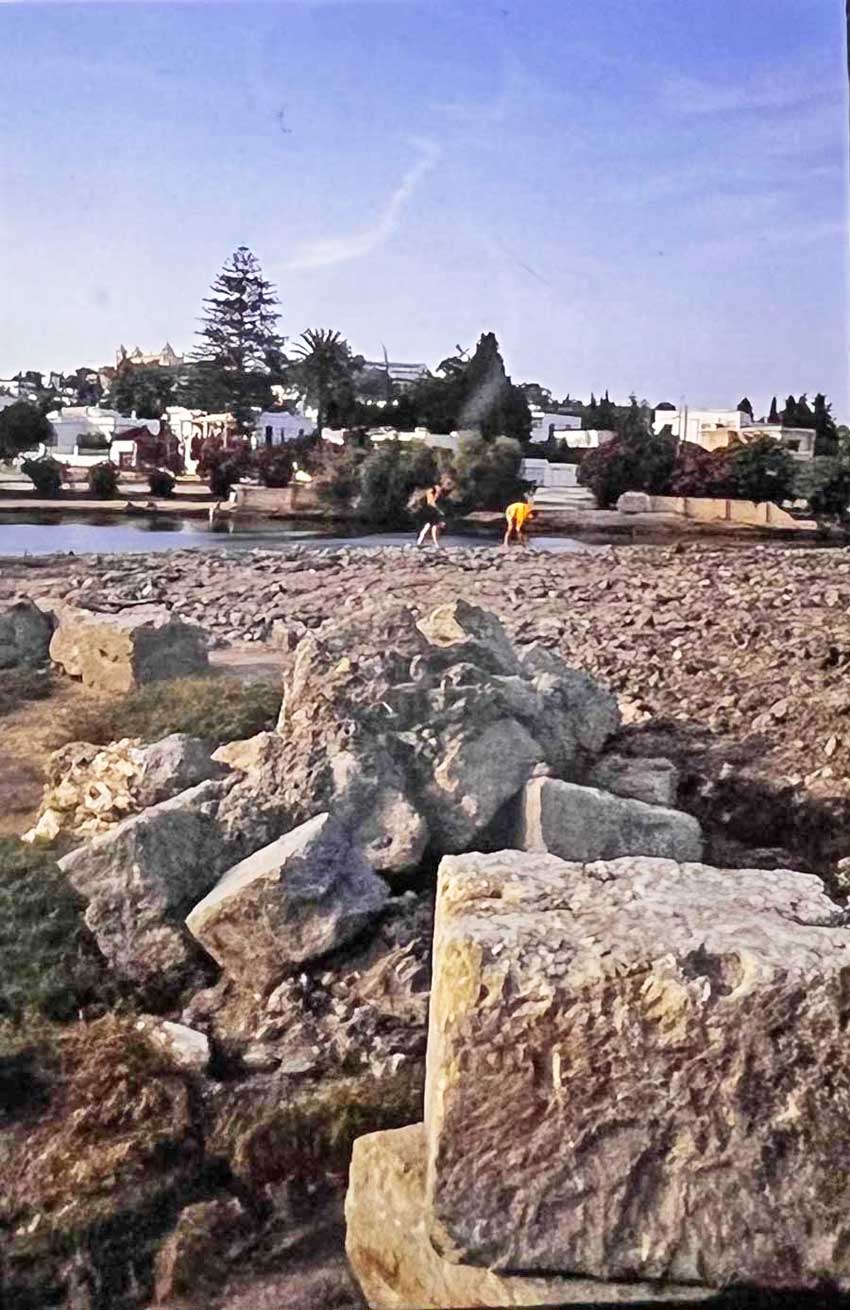 View from the circular island the middle of the Punic Harbour: in the background, Chrissie and Paul are examining scatters of pottery and other ancient debris.
View from the circular island the middle of the Punic Harbour: in the background, Chrissie and Paul are examining scatters of pottery and other ancient debris.
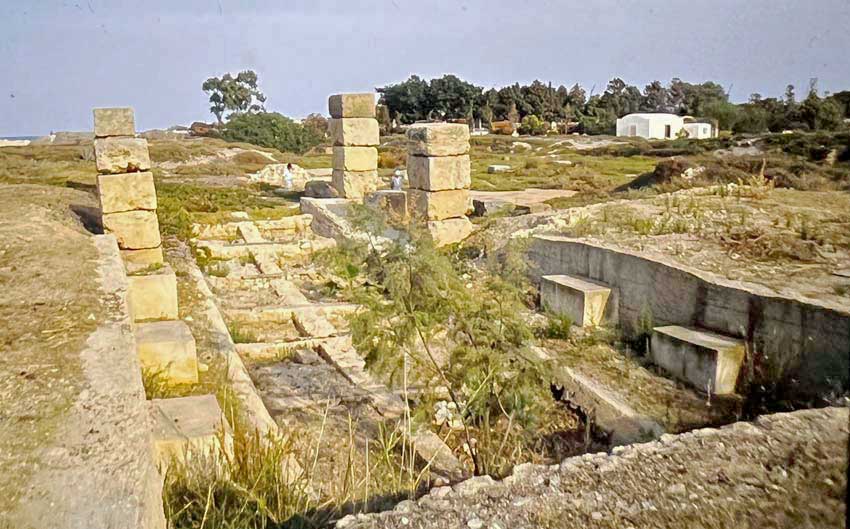 Remains of the ship shed where the Punic warships were accommodated, before being launched down the ramp into the lagoon.
Remains of the ship shed where the Punic warships were accommodated, before being launched down the ramp into the lagoon.
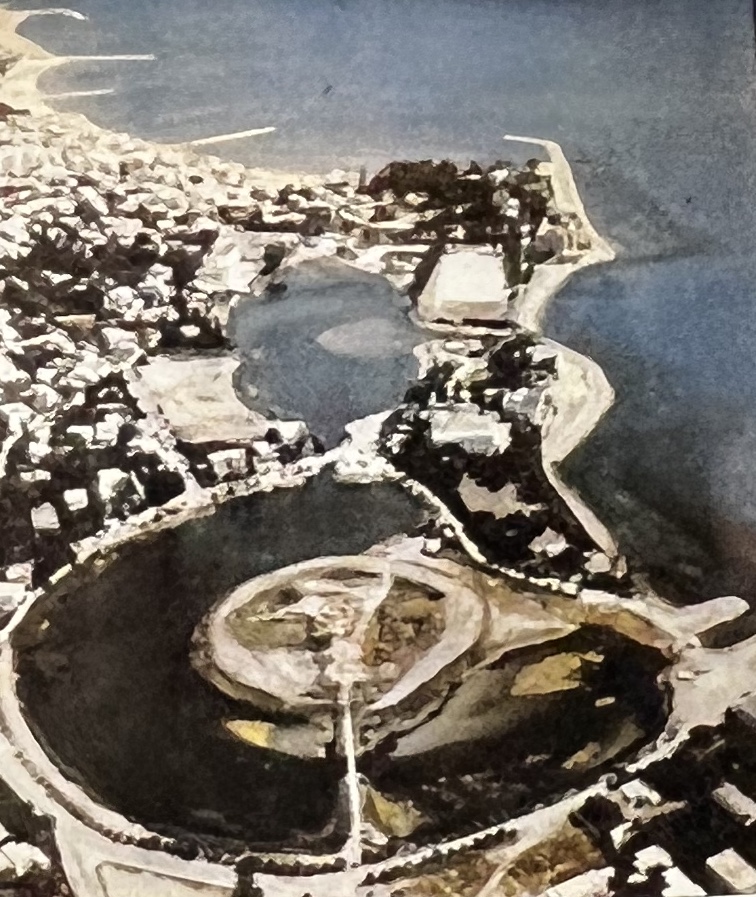 Aerial view of the circular harbour with the central island and the ancient access causeway still surviving.
Aerial view of the circular harbour with the central island and the ancient access causeway still surviving.
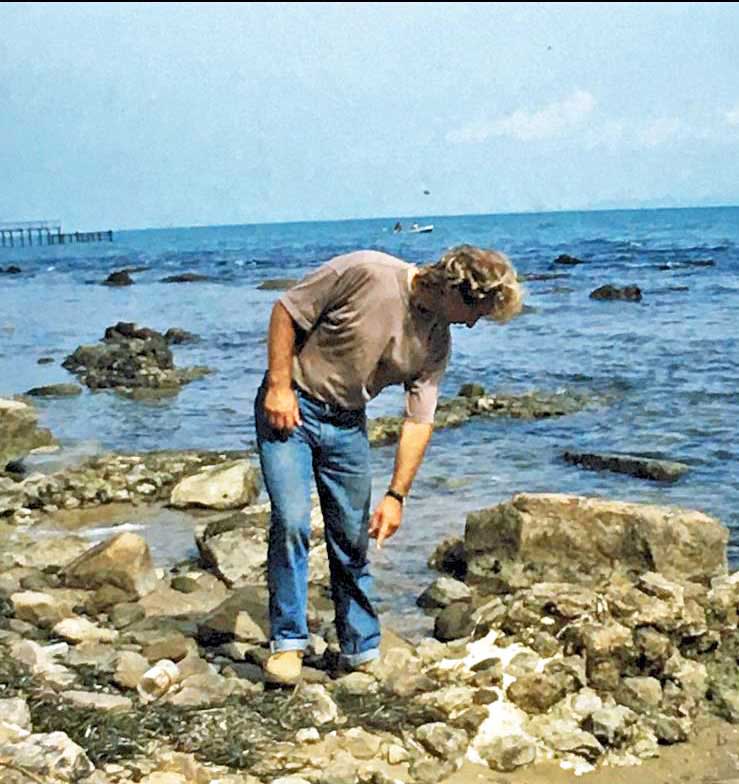 The remains of waterfront warehouses are still visible, partially submerged by rising sea levels.
The remains of waterfront warehouses are still visible, partially submerged by rising sea levels.
Later that week we were able to record a small section of the Punic harbour exposed in a trial trench, although that was not the focus of the main excavation programme.
Carthage was founded in the 9th century BC, and became one of the largest cities in the ancient world, dominating a maritime empire that stretched from North Africa to Spain, Sicily, Malta and Tyre. It was once Rome’s great rival, leading to three Punic Wars from 264 to 146 BC: the last of these saw Carthage brutally and totally destroyed. The Romans later rebuilt a city on the ruins, of which well-preserved remains have survived.
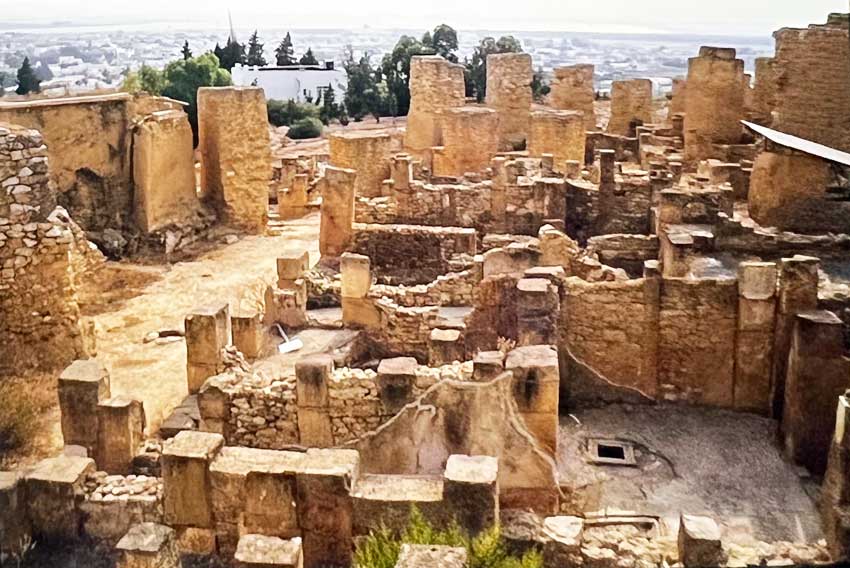
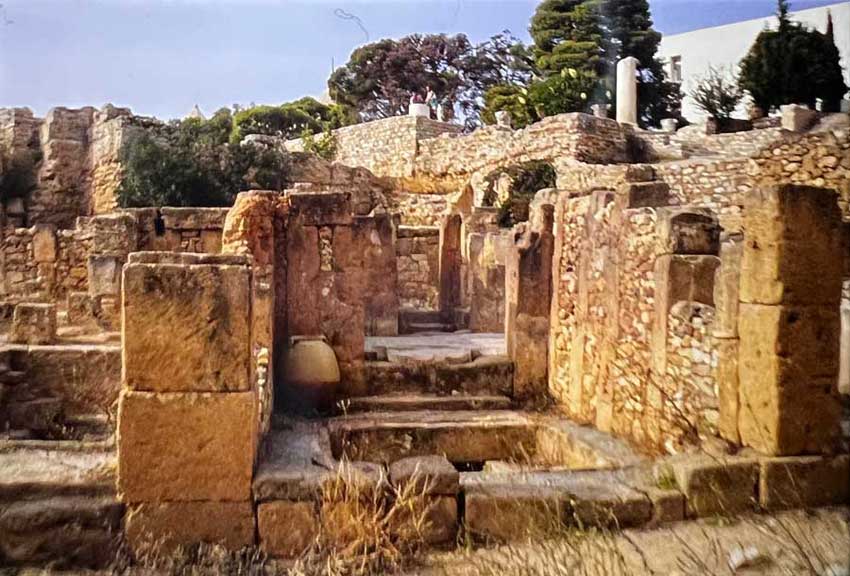
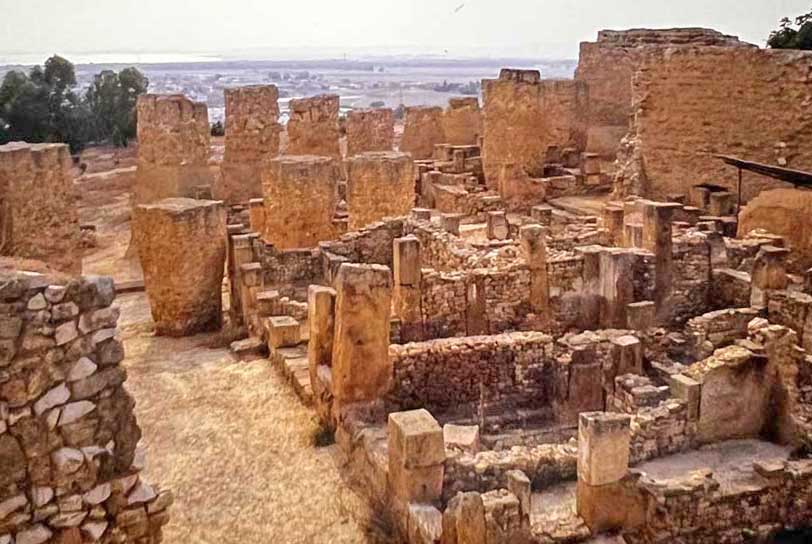
 These are the streets of the town as it was in 146BC, where the Roman army fought, house by house, slaughtering everyone in their way: the few inhabitants that survived were sold into slavery.
These are the streets of the town as it was in 146BC, where the Roman army fought, house by house, slaughtering everyone in their way: the few inhabitants that survived were sold into slavery.
The 1990 excavation season required a 7am start on site, with a tea break around 10.30. Work stopped at 2pm then lunch was a leisurely affair on the shady terrace out of the blistering heat. Catering was on a rota basis, one person each day was responsible for deciding the menu shopping and cooking. This system worked very well.
On site our Tunisian diggers provided copious amounts of very strong brewed tea which despite being totally non-alcoholic definitely had quite a kick and was a life saver. “Turned out nice again” was the daily joke as we shovelled in the burning sun and mopped our brows whilst sipping this potent brew.
One digger had a pet chameleon an amazing creature which seemed to enjoy being the centre of attention and changing colour for the delight of all.
Neptune (not unsurprisingly a fish restaurant) was a short walk from the dig house. It provided a stunning view of Cap Bon and the Mediterranean as waves lapped the sea wall of the terrace and served excellent food. It was here that I tried alioli for the first time: harissa was another new gastronomic experience, but not for the faint-hearted.
Carthage has a French colonial heritage, which includes its own TGM metro. Three stops from our local station Carthage Hannibal is Sidi Bou Said, a picturesque artisanal white washed village with contrasting blue doors and shutters nestling in the hillside of Cap Bon. Home to many artists and musicians, bougainvillea palms and jasmin abound as well as tourist shops and cafes. Café de Delices is a series of terraces on the cliff with amazing views of the Marina and the Gulf of Tunis. Sidi Bou Said was given heritage status in 1915 to help ensure its preservation.
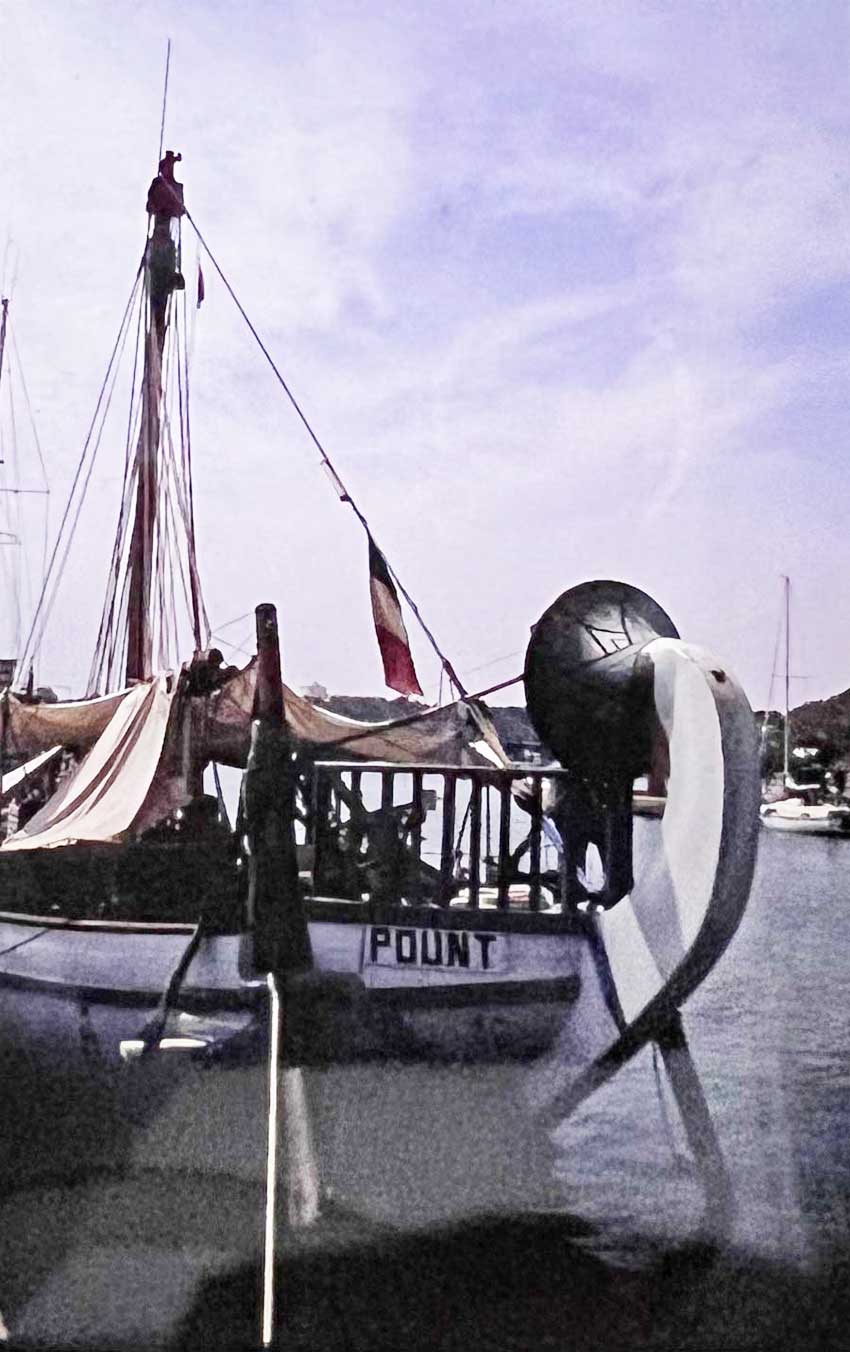 Le Pount- stern view
Le Pount- stern view
We saw an unusual sailing ship in the marina and were invited on board. It was a replica of an ancient Egyptian vessel, used for the voyages to the Land of Punt, a rich kingdom which may have been in Somalia.
Our stay also included a visit to the Bardo Museum in Tunis. This beautiful building houses an impressive collection of Phoenician masks, Roman mosaics, marble statues and artefacts from many eras as well as an Islamic department. So much to absorb and such a welcome respite from the heat, a truly memorable place to visit.
The dig house had previously accommodated an American School, and anti-American/Western feeling was become increasingly apparent. The ominous events of the first Gulf War found us huddled around a radio on our last night, listening to the news on the overseas service. By the time we had flown back home, Operation Desert Storm was already under way.


Comments powered by CComment